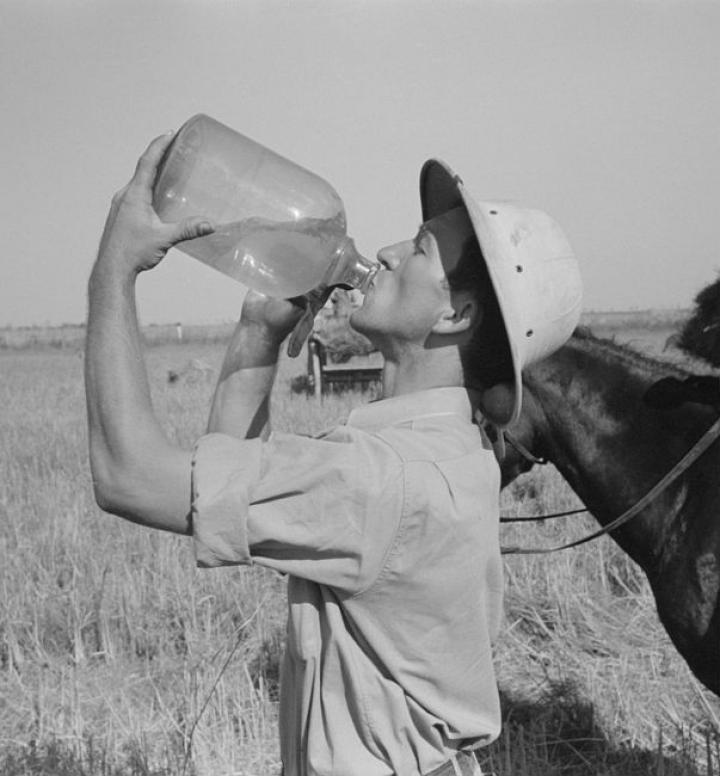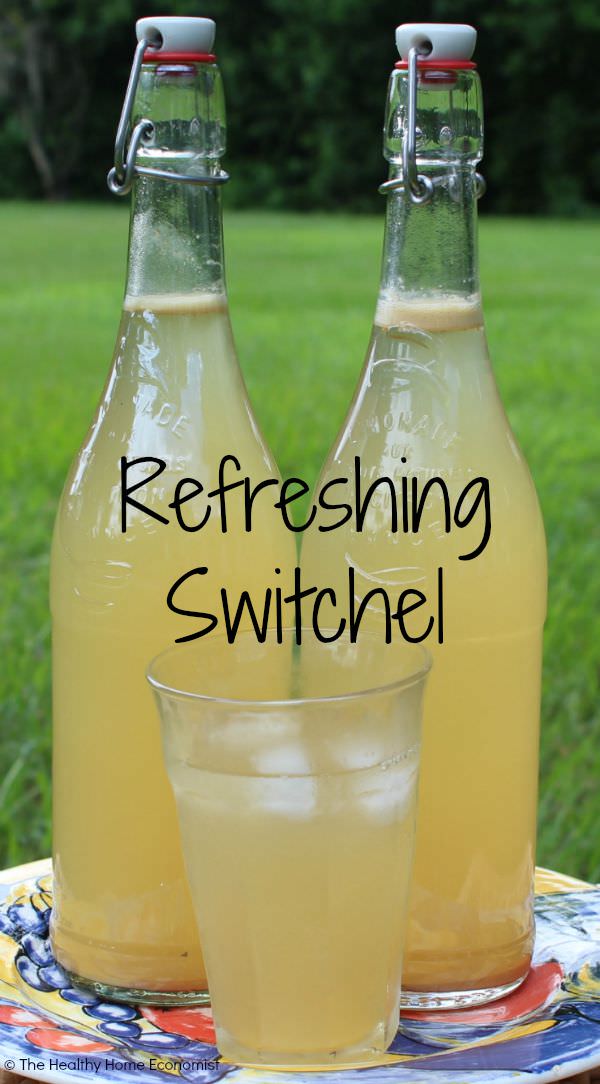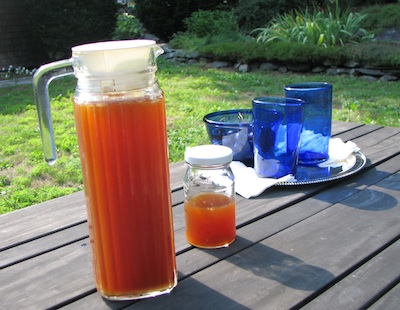Forget the Gatorade® and Turn to Switchel!
Have you heard of switchel (also known as haymaker’s punch)? I hadn’t until my son, Joseph, enthusiastically explained all its health benefits (he’d just made himself a gallon of it). Then I found an essay on switchel by Arthur Staples in The 1964 Old Farmer’s Almanac. Come to find out, it’s an old-fashioned summer drink that’s been around a long time and carries great history.

This is a drink that got farmers through a day of exhaustive work out in the sun-baked hay fields—hence the name haymaker’s punch. This distinctive American drink is even listed in the dictionary: “A drink made of molasses and water, sometimes with vinegar, ginger, or rum added; hence any strong, flavored drink.” It might be termed the original home-brew of New England.
But it was by no means peculiar to New England. In fact, switchel was a favorite of our United States Congress. Early lawmakers (such as John Randolph, Henry Clay, William H. Crawford, John C. Calhoun, Daniel Webster, Silas Wright, and their predecessors) met in very close quarters. To add to the atmosphere, the floors of the House and the Senate were frequently crowded with visitors. The senators and members of the House sat with their hats on, after the manner of England’s House of Commons.
On hot days—all summer and spring and often in winter—a great bowl of switchel stood in the center of the Senate or the House. Attendants came in every little while and refilled the bowl. Enormous quantities of it were consumed every day. This drink, because it kept the law makers cool and healthy (due to the powers of apple cider vinegar), is likely a very good reason much of the nation’s work actually got done during Washington’s scorching and muggy days.

Back in the day switchel (more commonly known as haymaker’s punch to the rank and file farmers of America) was made of ginger, molasses or honey, ice (if any could be obtained), water, and sometimes lemons. It was put into a stone or glass gallon jug and wrapped in a layer or two of thick cloth, to help it stay cool out in the fields. While the men-folk worked, the jug was tucked away in a shady place. The drink was available for all workers, but the law of the land was that the jug had to stay wrapped and go right back to its shady location. Anyone that didn’t follow this protocol lost the privilege of partaking.

Switchel is not only hydrating, it’s also energizing. And today we’re seeing this once popular drink make a comeback (but without any added rum). It’s even being offered in many restaurants around the country. Think of it as “Nature’s Gatorade®.” It will give you an electrolyte boost better than any pricey energy drink or soda. All the ingredients (except water, of course) are actually sources of the electrolyte potassium. And thanks to the apple cider vinegar, it’s a health tonic that doesn’t just energize, it boosts the immune system as it detoxifies your organs, as well.
Want to hop on the haymaker’s bandwagon (or should I say hay wagon)? I sure do, and am planning to make a jug of it this weekend. Meanwhile, if you have any experience with, or memories of haymaker’s punch, please pass them on. This is a part of American history we want to keep alive!

HAYMAKER’S PUNCH
1 gallon water
1 ½ cups raw honey (or unsulphured molasses or pure maple syrup)
½ cup apple cider vinegar
1 tablespoon freshly ground ginger
1 to 2 teaspoons fresh lemon or lime juice (optional)
Add all ingredients to a gallon jug and either stir or shake (with lid on) well to combine. It can be left out on the counter or stored in the refrigerator. Try to consume within a day or two to access the most nutrients.
This is a “to taste” drink. So start out with smaller amounts. You can always add more of any of the ingredients as you go along. Haymaker’s punch shouldn’t coat your mouth; it should taste refreshing. The lemon or lime juice is added for zing, but the drink is great without it.
- www.almanac.com
- www.healthyhomeeconomist.com
 Alice Osborne
Alice Osborne
Weekly Newsletter Contributor since 2006
Email the author! alice@dvo.com
